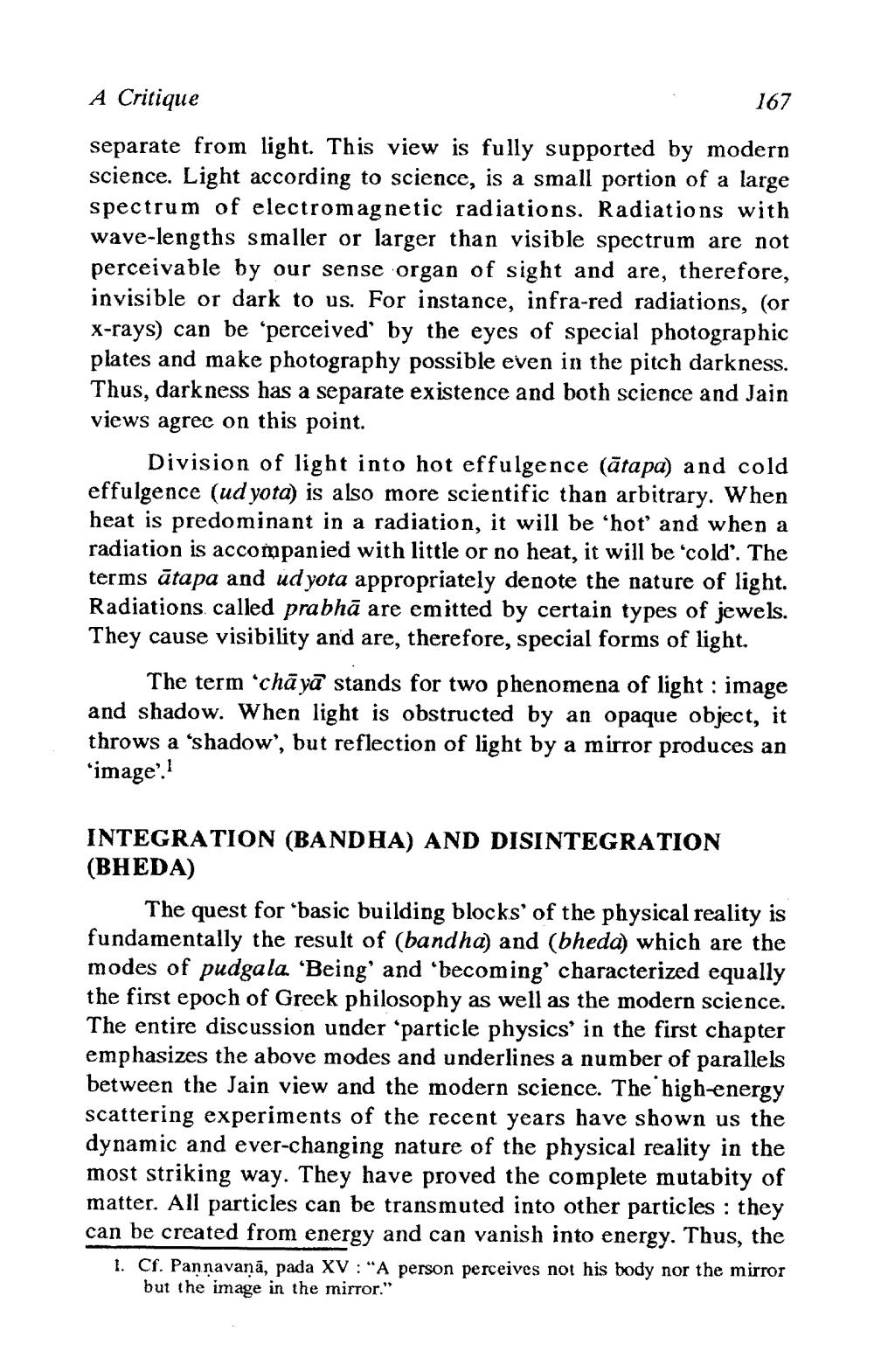________________
A Critique
167
separate from light. This view is fully supported by modern science. Light according to science, is a small portion of a large spectrum of electromagnetic radiations. Radiations with wave-lengths smaller or larger than visible spectrum are not perceivable by our sense organ of sight and are, therefore, invisible or dark to us. For instance, infra-red radiations, (or X-rays) can be perceived' by the eyes of special photographic plates and make photography possible even in the pitch darkness. Thus, darkness has a separate existence and both science and Jain views agree on this point.
Division of light into hot effulgence (ātapa) and cold effulgence (ud yota) is also more scientific than arbitrary. When heat is predominant in a radiation, it will be 'hot' and when a radiation is accompanied with little or no heat, it will be 'cold. The terms ātapa and ud yota appropriately denote the nature of light. Radiations called prabhā are emitted by certain types of jewels. They cause visibility and are, therefore, special forms of light.
The term 'chāyā stands for two phenomena of light : image and shadow. When light is obstructed by an opaque object, it throws a “shadow', but reflection of light by a mirror produces an 'image'.
INTEGRATION (BANDHA) AND DISINTEGRATION (BHEDA)
The quest for 'basic building blocks of the physical reality is fundamentally the result of (bandha) and (bheda) which are the modes of pudgala 'Being' and 'becoming characterized equally the first epoch of Greek philosophy as well as the modern science. The entire discussion under \particle physics' in the first chapter emphasizes the above modes and underlines a number of parallels between the Jain view and the modern science. The high-energy scattering experiments of the recent years have shown us the dynamic and ever-changing nature of the physical reality in the most striking way. They have proved the complete mutabity of matter. All particles can be transmuted into other particles : they can be created from energy and can vanish into energy. Thus, the 1. Cf. Pannavanā, pada XV : "A person perceives not his body nor the mirror
but the image in the mirror."




